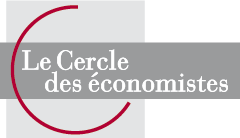Ambition, Antifragility, and the Many Futures of R&D
By Alf Rehn, Professor of Innovation, design and management in Danemark
Read his biography
To some, these may seem like heady times for innovation. With the global reopening of the economy, coupled with what seems like an increasing momentum of emerging technologies (including, but not limited to, developments in automation, artificial intelligence, fintech, nanotechnology, robotics, and synthetic biology), a new golden age of R&D has been foretold, one where technological optimism reigns triumphant. That said, there are worrying signs of fragility to the global innovation system. An increasing amount of capital is placed on a decreasing number of bets – research into AI, circular economy, and pandemic responses are well cared for, but overall we’re seeing a narrowing of innovation ambition. Further, with a global tendency towards austerity, basic research into as of yet unproven fields is being attacked from all sides.
I have for some time, if somewhat reluctantly, suggested that we may be in the early phases of a slow innovation crisis. What I’ve meant by this is that we are currently seeing both corporations and states being eager to optimize their R&D expenditure, all whilst cutting back on basic research foundations, such as e.g. university infrastructures. What this can create is a double whammy of innovation limitation, one where the effects might be rather limited in the short run – the run of CEO tenures and election cycles – but which can still create an inordinate impact over the long cycles of innovation. By limiting the “great bets” made today to only those technologies and fields that are seen as legitimate and proven, we may well be hobbling innovation for decades to come.
At play here is the issue of fragility and antifragility in future-oriented endeavors. Real R&D, the kind that for a long while was the stock in trade of both corporations and states – think Xerox PARC and the golden age of DARPA – is a most antifragile endeavor. Here, there are many redundancies, avenues are explored without undue care for ROI, and long shots are not only appreciated, they’re insisted upon. The R&D of yore explored ideas and technologies not because there was a clear utility function or use case, but because they were interesting. Bets were scattered on both the promising and the unfathomable, and several teams working along similar paths was seen as normal and beneficial, rather than as an extravagance to be rooted out by beancounters. Research wasn’t always efficient, if we by this mean that it only did what was absolutely necessary, but the redundancies and parallell processes built into the system ensured that no one failure could derail the system. Development wasn’t always linear, but the freeform paths it could take ensured that novel
trajectories weren’t lost and a plethora of idea were tested.
Contemporary R&D is however starting to take on a far more fragile form. Research is measured on certainty of results and short-term payoffs, whereas development is often curtailed to whatever is seen as most legitimate and politically apposite at this very instant. The reasons for this all can seem perfectly reasonable. We want efficiency, as we’ve been conditioned to see any form of waste or redundancy as bad by definition. We celebrate calculative rationality, even though both rationality and calculability are products of historical data – and thus not always helpful in forward-looking thinking. At heart, we yearn for control of R&D, even though the attempt to control is what can make R&D a fragile system.
So at this critical juncture of human existence, after living through one global crisis and at the precipice of opening up the world to face several others, this issue of fragility is put into stark relief. In the face of issues such as ecological tipping points, the aging society, and the crises of social inequality, we as a global society cannot afford fragility in our innovation systems. Simultaneously, both political expediency and corporate austerity are driving us towards an innovation future where only the safest, most legitimized of bets are supported and explored.
What is needed now, in the face of the coming age of problems most wicked, is a return to the ambitious and antifragile approaches to innovation of yore. We need wild, unfettered explorations of possibilities, and bets on technologies that as of yet might not be media-friendly and overly hyped. We need a spectrum of investigations, ambitious odysseys, ferocious experimentations, with little care for what is considered to be the ‘right’ thing to get into.
The choices we make right now will not only decide our near future, but the future of innovation as a whole. Safe austerity can cut off innovation trajectories for decades to come, where ambitious free exploration can be what sets off the next great transformation. Our choices, and our capacity to deal with uncertainty are not without consequence, and we now have to choose whether ambition should trump our desire for control. The fragility or antifragility of our innovation system depends upon it.












